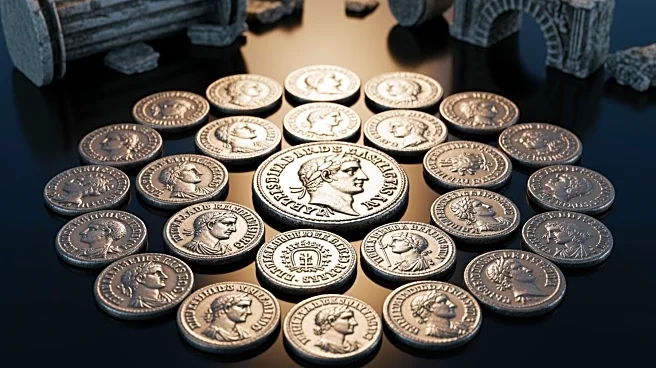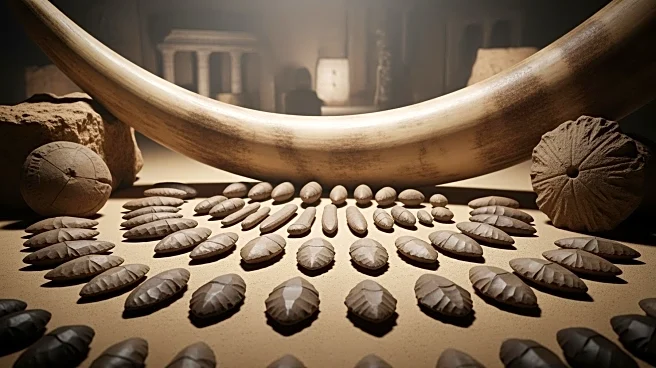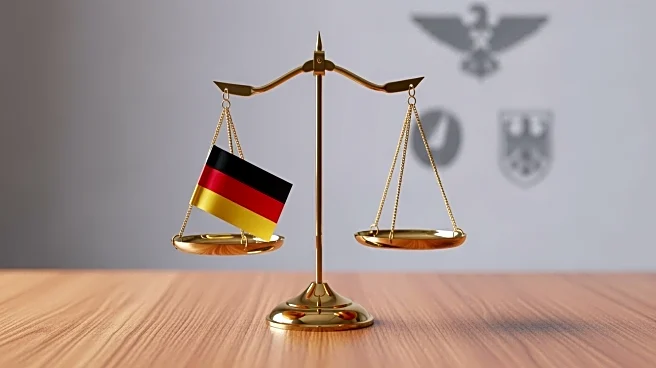What's Happening?
A significant Roman silver hoard was discovered by a metal detectorist in 2017 near Borsum, Germany, but was kept secret until 2025. The hoard includes 450 silver coins, silver bars, a gold ring, and a gold coin,
dating back to the early Roman Imperial era. The discovery was revealed after the detectorist contacted authorities, leading to further archaeological investigations. The original context of the hoard was compromised due to improper excavation, but additional coins were recovered in follow-up digs.
Why It's Important?
The discovery of the Roman hoard provides valuable insights into the historical interactions between Rome and northern Germanic tribes. It offers a unique opportunity to study the trade and conflict dynamics of the early Roman Imperial era. The hoard's analysis could reveal information about the origins and purposes of the artifacts, contributing to the understanding of ancient economic and cultural exchanges. The event also highlights the importance of regulated archaeological practices to preserve historical contexts.
What's Next?
Archaeologists will continue to analyze the hoard to establish a precise chronology and determine its origins. The findings may shed light on whether the hoard was hidden by Roman soldiers, traders, or local tribespeople. The detectorist involved has participated in a state-run metal detector course, emphasizing the need for permits to prevent the loss of important archaeological finds. The case underscores the importance of legal frameworks in archaeological discoveries.
Beyond the Headlines
The incident raises questions about the ethical responsibilities of amateur archaeologists and the preservation of cultural heritage. It highlights the need for public awareness and education regarding the legal and ethical aspects of archaeological discoveries. The story reflects broader themes of cultural preservation and the role of individuals in safeguarding historical artifacts.












